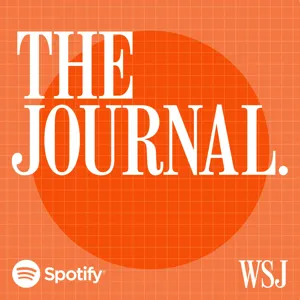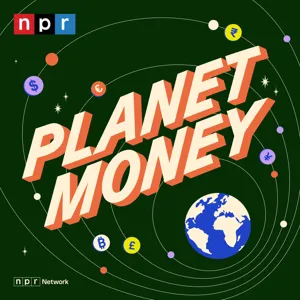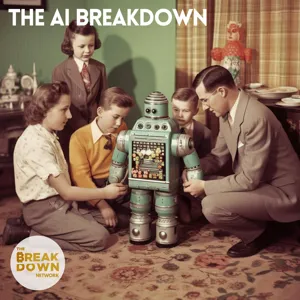Podcast Summary
Protecting Human Creativity with Nightshade: Researchers at the University of Chicago developed Nightshade, a set of tools to help artists protect their digital art from AI replication, ensuring human creativity continues to thrive
The name "nightshade" for a piece of software in the context of this discussion refers to a tool designed to protect human creativity in the face of advancing AI capabilities. This name is inspired by the real-life plant, Atropa belladonna, also known as deadly nightshade, which holds deep associations with both death and aesthetic beauty. Historically, this plant has been known for its poisonous properties, but it also has a connection to art and beauty due to its use as a cosmetic. In the context of the software, nightshade is a set of tools created by researchers at the University of Chicago to help artists protect their digital art from being replicated and potentially replaced by AI models. By applying these tools to their work, artists can create art that appears normal to humans but is harmful to AI models, preserving the unique value and importance of human creativity. This conversation between Scott and Sean Chan highlights the potential implications of AI on human creativity and the need for measures to protect it. While AI models are impressive in their ability to generate images and copy styles, there is a concern that they could eventually replace human artists. The development and use of tools like nightshade aim to ensure that human creativity continues to thrive and evolve.
AI models learn from images and text, associating names with specific styles, but can make errors when dealing with complex images.: AI models can mimic an artist's style, but may make errors or produce inaccurate results, requiring human oversight.
AI models, such as Midjourney or DALL E, learn from images and corresponding text during the training process. They associate names with specific image styles and try to reproduce similar images when prompted. However, these models can make significant errors, or "poison" the output, especially when dealing with complex or nuanced images. For instance, an AI model might mistake an elephant for a cat, leading to inaccurate results in the future. This phenomenon, known as style mimicry in generative AI, can be used to mimic an artist's style by training the model on their work. While the quality may not be as good as the original, it can be sufficient for various commissions, potentially replacing the artist in some cases. It's important to remember that these models learn from the data they are given and may make errors or produce inaccurate results, making human oversight crucial.
Disrupting AI Art with Small Changes: Researchers are developing methods to confuse AI models, preventing them from accurately mimicking specific artistic styles, by adding small changes that exploit differences in human and AI perception of images.
As artificial intelligence (AI) models become more advanced, they are increasingly capable of generating art that closely resembles human creations. This has the potential to disrupt the traditional art market, allowing customers to create art in the style of specific artists using AI models instead of commissioning human artists. However, researchers are developing methods to disrupt this style mimicry, such as Glaze, which adds small changes to images that confuse AI models without altering how humans perceive them. Essentially, these changes exploit the differences in how humans and AI models perceive images. While AI models can identify subtle variations in pixel values that humans cannot, they also have a fundamentally different way of processing visual information. By carefully crafting these small changes, researchers can confuse AI models, preventing them from accurately mimicking specific artistic styles. The analogy given is that AI models can be thought of as a UV light system, revealing hidden details that humans cannot see. This opens up new possibilities for research and development in the field of AI-generated art and its impact on the traditional art market.
Manipulating AI images is challenging: Despite attempts to make AI models robust against image manipulations, it remains difficult to do so without sacrificing performance, especially for generative models.
While it may be possible to make subtle changes to images that go unnoticed by the human eye, these changes can significantly disrupt the function of AI models that process and understand those images. These models work by mapping raw pixel data into high-level features, which can be interpretable for certain types of images but not for the complex feature spaces used by more advanced models. Researchers have been working for years to make these models more robust against such changes, but it is generally difficult to do so without sacrificing performance. In the case of generative models, the sacrifice can be quite significant due to the need for precision in producing high-quality artwork. Additionally, developers have added randomness into the image processing to make it harder for malicious actors to manipulate the models effectively. While some attempts have been made to train AI to recognize and bypass these manipulations, they have only worked in specific cases. Overall, the complexity and sophistication of AI models make them difficult to manipulate without significant effort and potential performance sacrifices.
CIS: A Community-Driven Resource for Enhancing Cybersecurity: The Center for Internet Security (CIS) provides valuable cybersecurity best practices through a community-driven consensus process, saving time, money, and effort for organizations.
The Center for Internet Security (CIS) is a valuable resource for businesses and individuals looking to enhance their cybersecurity. With the increasing number of cyber threats and limited IT resources, CIS uses a community-driven consensus process to develop and maintain security best practices. These resources save time, money, and effort for organizations at various stages of their cybersecurity journey. CIS also collaborates with government organizations to share information and strengthen their collective security. Two of CIS's tools, Glaze and Nightshade, were discussed. Glaze makes data unreadable to AI, while Nightshade not only conceals data but also corrupts the base model, making it generate incorrect results. These tools can be thought of as poisoning the well to mislead AI. To be truly useful at scale in the real world, these models need to be integrated into large platforms where data is being scraped to train them. Platforms are currently discussing the implementation of these tools, with some expressing concerns over artist copyright protection. As the conversation continues, these tools have the potential to move beyond individual use and significantly impact the security and accuracy of AI models.
The intersection of AI and intellectual property: Balancing cost savings and IP protection: Companies in the entertainment industry seek to use AI for cost savings but must navigate the complex issue of intellectual property protection. Regulation around AI's use in this space is still evolving, leaving creators to explore technical solutions like Glazy to bridge the gap.
The intersection of AI and intellectual property is a complex and contentious issue. Companies in the entertainment industry are interested in using AI to save costs but are wary of infringing on the value of their IP. Entertainment companies, including Disney, have already taken steps to protect their characters from being replicated by AI. This creates a tension between the desire to use AI for cost savings and the need to protect valuable intellectual property. The issue is further complicated by the lack of clear regulation in the space. While some countries, like the US and Europe, are exploring regulations around AI, others, like China and Japan, are more supportive of its use. The discussion around regulation has been slow, and it remains to be seen how court cases and potential new laws will shape the future of AI in this space. The technical solutions, like Glazy, can provide a temporary solution for creators while they wait for regulation to catch up.
AI-generated content copyright law in Beijing: Implications for artists and technological solutions: New copyright law in Beijing for AI-generated content raises questions about protection and enforcement for artists, while technical solutions like preventing image scraping or compensating creators face challenges.
The recent passing of a copyright law in Beijing for AI-generated content is a complex issue with implications for both artists and technological solutions. While this law may offer some protection for artists, it's unclear how it will be enforced and who will ultimately benefit. Technical research and solutions, such as preventing image scraping or compensating creators, are important but face challenges. The team working on this issue is a research team with a background in security and privacy of machine learning systems. They have transitioned their focus to protecting artists due to their expertise in studying the variability of AI models. The implications of this new law extend beyond just images, as AI is capable of generating text, music, and more. Decisions made now will impact future AI-generated content, so it's crucial that the creative class is considered in these discussions. The team's small but focused, and their background in machine learning security and privacy positions them well to tackle this issue.
Protecting Human Creativity from AI: Glaze team aims to preserve human creativity by protecting images from AI-generated copyright infringement, reaching 1.6M downloads and 3k active users on their web-based version.
The team behind Glaze, a tool used to protect images from AI-generated copyright infringement, is dedicated to preserving human creativity in the face of advanced AI models. With backgrounds in privacy and security of AI systems, the team has seen significant downloads of their app, reaching approximately 1.6 million as of last week, but they don't track active usage for privacy reasons. They also offer a web-based version for users without laptops or GPUs, which has 3,000 active users and a large waitlist. The team's motivation goes beyond helping individuals and includes a personal mission to protect human creativity from being overshadowed by AI. They believe that if the current trend continues, AI may eventually replace human artists, leading to a stagnant art world with no room for evolution. To support their research, they recently set up a donation platform through the University of Chicago.
AI's Impact on Human Creativity: The advancement of AI in generative art raises questions about its impact on human creativity's economic viability, necessitating regulation and a cultural shift towards understanding its consequences.
The advancement of AI technology, specifically in the realm of generative art, raises significant questions about the future of human creativity as a viable career. While the technology may not completely replace human creativity, it could potentially make it less economically viable. The speakers expressed initial awe at the capabilities of the AI, but soon recognized the potential threats it poses. They anticipate regulation in the field, but also see a need for individuals and organizations to help guide AI development in a positive direction. The cultural shift towards AI use necessitates a better understanding of its impact on humanity and the development of tools to help steer its development. Overall, the conversation underscores the importance of balancing the benefits of AI with its potential consequences for human creativity.






